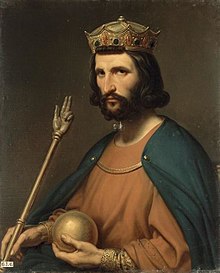Lay abbot

Lay
Background
Numerous
History
This custom of the Merovingian rulers was taken as a precedent by the French kings for rewarding laymen with abbeys, or giving them to bishops
Louis the Pious aided St. Benedict of Aniane in his endeavours to reform the monastic life. In order to accomplish this it was necessary to restore the free election of abbots, and the appointment as well of blameless monks as heads of the monastic houses. Although Louis shared these principles, he continued to bestow abbeys on laymen, and his sons imitated him.[1] Although not a cleric, Einhard was lay abbot of the monastery of St. Bavo in Ghent and at his own foundation at Michelstadt.[2]
Various synods of the ninth century passed decrees against this custom; the Synod of Diedenhofen (October, 844) decreed in its third canon, that abbeys should no longer remain in the power of laymen, but that monks should be their abbots
In a synod held at Trosly, in the Diocese of Soissons, in 909, sharp complaints were made (ch. iii) about the lives of monks; many convents, it was said, were governed by laymen, whose wives and children, soldiers and dogs, were housed in the precincts of the religious. To better these conditions it was necessary, the synod declared, to restore the regular abbots and abbesses; at the same time ecclesiastical canons and royal capitularies declared laymen quite devoid of authority in church affairs.[6]
Lay abbots existed in the tenth century, also in the eleventh. Crínán of Dunkeld (d. 1045) was the lay abbot of the monastery of Dunkeld. While the title of Hereditary Lay Abbot was a feudal position that was often exercised in name only, Crinán seems to have acted as Abbot in charge of the monastery in his time. He was thus a man of high position in both clerical and secular society.
See also
Notes
- ^ a b c Kirsch, Johann Peter. "Lay Abbot." The Catholic Encyclopedia Vol. 9. New York: Robert Appleton Company, 1910. 26 Jul. 2015
- ISBN 9780521834537
- ^ Karl Josef von Hefele, Konziliengeschichte, 2nd ed., IV, 110
- ^ Hefele, op. cit., IV, 115
- ^ Albert Hauck, Kirchengeschichte Deutschland, II, 598
- ^ Hefele, op. cit., IV, 572-73
- ^ Hefele, op. cit., V, 116
![]() This article incorporates text from a publication now in the public domain: Herbermann, Charles, ed. (1913). "Lay Abbot". Catholic Encyclopedia. New York: Robert Appleton Company.
This article incorporates text from a publication now in the public domain: Herbermann, Charles, ed. (1913). "Lay Abbot". Catholic Encyclopedia. New York: Robert Appleton Company.
